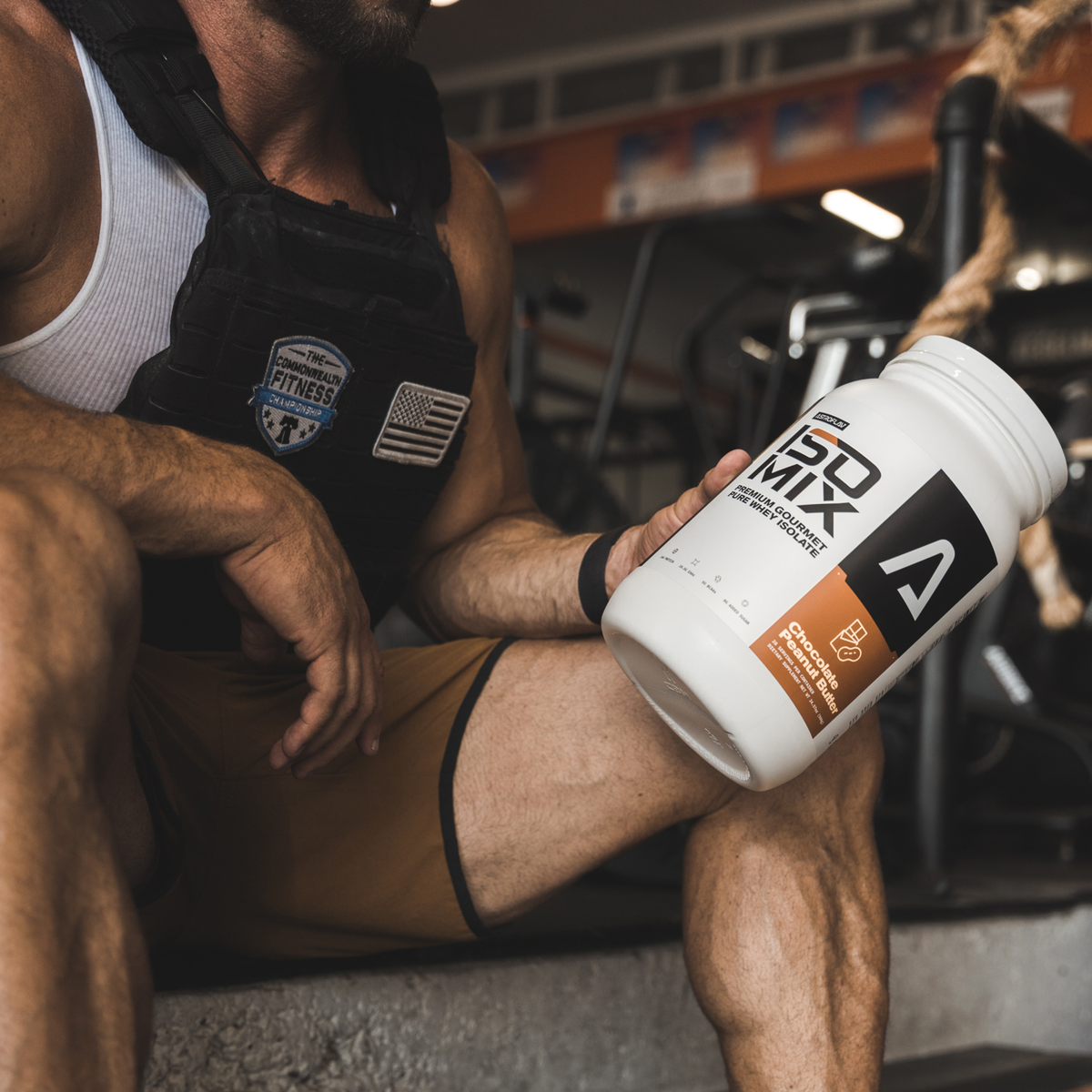
Is Inflammation Affecting Your Training?
In this article, we're taking a closer look at a factor that could be throwing a wrench in your training routine: inflammation. Inflammation is often viewed as the body's natural defense mechanism, a necessary response to injury or infection. However, when inflammation becomes excessive or chronic, it can wreak havoc on our joints, leading to a host of problems that extend far beyond mere discomfort. In this article, we'll cover the impact of excessive inflammation on joint health and explore how it can potentially lead to more serious conditions if left unchecked. Keep scrolling to learn more!
What is Inflammation?
Inflammation is a natural response by the body's immune system to injury, infection, or stress. It serves as a protective mechanism, helping to repair damaged tissues and fight off pathogens. However, chronic inflammation can have detrimental effects on overall health and athletic performance.
According to scientific research and insights from InsideTracker, chronic inflammation may impair training adaptations and hinder recovery processes, ultimately leading to decreased performance and increased risk of injury. This physiological response involves the release of pro-inflammatory cytokines and other immune cells, which can disrupt cellular processes and contribute to tissue damage. [1.]
Understanding inflammation's role in the body is crucial for athletes and fitness enthusiasts seeking to optimize their training and recovery strategies. By adopting lifestyle modifications and targeted interventions to manage inflammation, individuals can enhance their overall well-being and maximize their athletic potential. Keeping reading to learn both the positives and negatives of inflammation to the body!
Why Inflammation Can Be a Good Thing
Did you know that inflammation can actually be a good thing? Inflammation is needed for recovery after exercise. In moderation, of course. When regulated and moderate, inflammation plays a crucial role in muscle growth and repair while also contributing to the muscle hypertrophy process.
In response to resistance exercise, such as weightlifting, micro-tears occur in muscle fibers, triggering an inflammatory response. This process activates satellite cells, which are responsible for muscle repair and growth. Inflammation recruits immune cells, such as macrophages, to the damaged muscle tissue, facilitating the removal of cellular debris and promoting tissue regeneration.
Additionally, inflammatory cytokines, such as interleukin-6 (IL-6), play a dual role by stimulating muscle protein synthesis and promoting the proliferation of satellite cells. Ultimately, this orchestrated inflammatory response leads to muscle adaptation and hypertrophy over time. Scientific information aside, healthy inflammation can play a role in muscle growth and can potentially optimize training; however, increased and chronic inflammation can most definitely negatively affect training and exercise.
How Inflammation Can Affect Training & Exercise
Inflammation, when uncontrolled or excessive, can have detrimental effects on training and exercise performance. Think of it like this: if your muscles are constantly inflamed, they won't recover as quickly, leaving you feeling sore and sluggish for longer periods. This can make it harder to push through tough workouts or hit your usual performance levels. Plus, inflammation can also create tension with your joints, making movements feel stiff and uncomfortable.
Research indicates that chronic inflammation is associated with increased muscle soreness, decreased muscle strength and power, and prolonged recovery times. Inflammatory markers such as C-reactive protein (CRP) and interleukin-6 (IL-6) have been linked to decreased exercise capacity and impaired muscle function [1.]
Moreover, chronic inflammation may disrupt the balance between muscle protein synthesis and breakdown, hindering muscle repair and growth. Overall, excessive inflammation can compromise training adaptations and increase the risk of injury, ultimately impeding progress towards fitness goals.
So, while a little inflammation is normal after a tough workout, too much of it can really put a damper on your training progress. That's why it's important to take steps to manage inflammation, like getting enough rest, eating anti-inflammatory foods, and staying hydrated. Therefore, managing inflammation through proper recovery strategies, nutrition, and lifestyle interventions is essential for optimizing training outcomes and supporting long-term health and performance.
Why Inflammation Can Be Bad On the Joints
Excessive inflammation poses a significant threat to the health of our joints. When inflammation persists over time, it can lead to the breakdown of cartilage, the protective tissue that cushions our joints and allows for smooth movement. As cartilage deteriorates, the bones in the joint may begin to rub against each other, causing pain, stiffness, and swelling. This process sets the stage for the development of degenerative joint diseases such as osteoarthritis, a chronic condition characterized by the gradual deterioration of joint cartilage.
Moreover, excessive inflammation can exacerbate existing joint conditions and contribute to their progression. In conditions like rheumatoid arthritis, an autoimmune disorder where the body's immune system mistakenly attacks its own tissues, chronic inflammation plays a central role in perpetuating joint damage. The inflammatory response leads to the formation of destructive immune complexes within the joints, resulting in inflammation, swelling, and joint deformity if left untreated.
Prevention and Management Strategies:
Chronic inflammation can lead to various health issues, including joint pain and increased risk of chronic diseases. However, proactive measures can help prevent and manage inflammation, promoting overall well-being.
Regular exercise, such as moderate-intensity activities and strength training, can help reduce inflammation and support joint health. Pair exercise with a diet rich in fruits, vegetables, omega-3 fatty acids, and healthy fats while minimizing processed foods and refined sugars. Incorporating ingredients like turmeric and boswellia serrata into your diet or supplementation routine can further reduce inflammation.
"Inflammatory Health" from AstroFlav is a carefully crafted supplement formulated with key ingredients known for their anti-inflammatory properties.
This supplement includes turmeric extract (curcumin) and boswellia serrata extract, which act as powerful antioxidants, easing joint pain and inflammation. These ingredients work synergistically to reduce inflammation and support joint function, providing relief for those struggling with discomfort.
The Bottom Line:
Managing inflammation is essential for maintaining optimal health and well-being. By incorporating regular exercise, adopting a balanced diet rich in anti-inflammatory foods, and considering targeted supplementation like "Inflammatory Health" from AstroFlav, you can effectively reduce inflammation and support joint health. Remember to consult with a healthcare professional before starting any new exercise regimen or supplementation routine. With proactive measures and a holistic approach, you can combat inflammation and live a healthier, more active life!
RESOURCES
-
InsideTracker. (n.d.). Is inflammation affecting training and recovery? InsideTracker. Retrieved from https://www.insidetracker.com/a/articles/is-inflammation-affecting-training-and-recovery
-
Paulsen, G., Mikkelsen, U. R., Raastad, T., & Peake, J. M. (2010). Exercise-induced muscle damage and inflammation: re-evaluation by proteomics. Journal of Physiology and Biochemistry, 66(1), 33–44. https://doi.org/10.1007/s13105-009-0029-7




